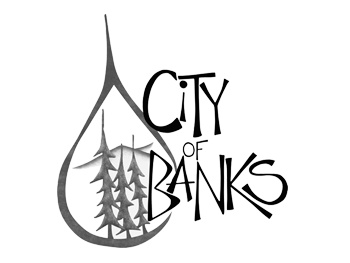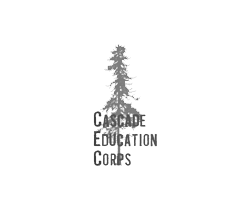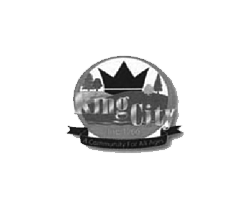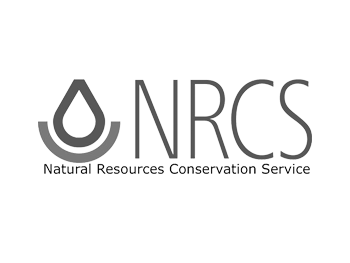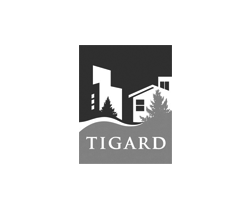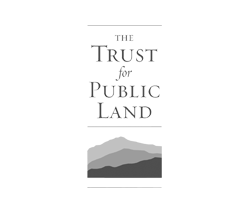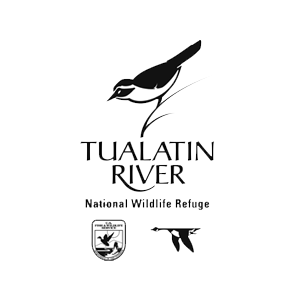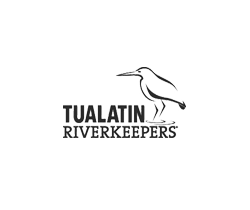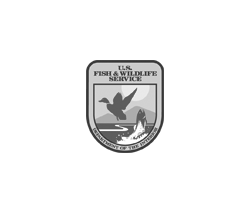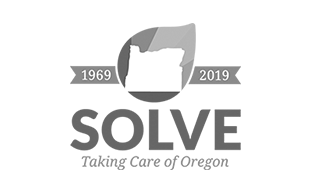In 2023, Tree for All partners identified and formed two working groups with the goal of focusing member actions and available resources on key challenges facing the Tualatin River Watershed. These groups—healthy tree canopy and habitat connectivity—have been meeting regularly to identify goals and create metrics to measure the impact of their work.
Bruce Barbarasch, Sustainability Manager at Tualatin Hills Park & Recreation District and a member of the healthy tree canopy working group, recently shared an update on the group’s efforts and its vision for the future.
Bruce Barbarasch at a Tree for All visioning workshop in 2023
Tell us a little bit about the working group.
The working group has eight members, give or take, including a pretty good cross section of major agency players and community partners. We’ve had folks from the Oregon Department of Forestry, the Intertwine Alliance/Connecting Canopies Coalition, Clean Water Services, THPRD, and the City of Hillsboro. We’ve also had folks from the nursery industry and a consulting arborist. And we’ve essentially been asking, "What does a healthy tree canopy look like across the urban area?” We want to come to some agreements, at least as practitioners, as to what we think that looks like.
Can you tell us more about the specific goals the working group has outlined?
Ultimately, we want to come up with a goal for how many trees—or at least how much tree cover—there should be across the region in different kinds of areas: residential, industrial, commercial. Then we want to work toward identifying partners, agencies, or organizations that might have an interest in planting trees.
We want to make this a sustainable tree planting project. It’s one thing to plant a bunch of trees and leave them there, but we want folks who are going to actually prepare the site, plant the trees, and care for the trees through an establishment period where they can grow roots and a healthy crown.
Trees provide shade. They provide beauty. They do all these good things—they clean the air—and they're worth investing in. So we're trying to figure out how to get the financial investment to sustain what we start.
How is the group finding specific areas to focus on?
The goal of the Washington County volunteer Heat Index Mapping project was to determine which areas of the county are the warmest on these peak summer days, which ones hold the heat over time, and which ones are significantly cooler. What we learned was that the Tualatin Valley Highway—the TV Highway corridor in particular—is really hot. Downtown Beaverton and downtown Hillsboro—areas with more concrete, hard surfaces buildings—tend heat up more, too. They have fewer trees, less green—they don't have any protection. And so the group is starting to coalesce around the areas that are most likely to benefit from trees. Those probably become our focus areas. I wasn't shocked by the results, but having the data to be able to go out and say, "This is a really hot spot and here are some of the groups that are affiliated with it," has been a pleasant surprise.
Have you found any models in other areas of the country that were particularly helpful or instructive?
We've looked at models from a number of places. Everybody wants trees, but everyone's a little bit different. I think the models that have been most compelling have been those that emphasized connection and communication with local communities. Because it's one thing for us to say, "Oh, we're the great big agency and we're coming to give you trees." That's an old-fashioned model. We’d rather say, "Hey, we're a great big agency and we want to work with you to figure out what you need. And if you need some trees, we might be the people to work with you. But if you need air conditioners, if you need community health stuff, we’ve got other partners." That's what I'm most excited about. It doesn't have to be one solution.
Where is the working group now in terms of realizing its goals? What’s the next step?
We’ve been in a formative stage for a while. My hope is that we're able to formalize the goals in early fall of this year so that by winter we can start to do active outreach.
We have a fuller understanding of what some of the barriers are to entry for this kind of work. We’ve talked about regulations from different cities and counties. In some cases, there are issues to be resolved just to make the tree planting and management more effective and efficient, especially at scale.
Once we have those agreed-upon goals, we’ll start to find partners and break into project modules. For example, we might say, "Here's a downtown Hillsboro project, here's a TV Highway project, here's a parks and trails project." Different groups are going to buy in. We're not expecting to plant the entire region at once. And so that's next. And then based on who wants to participate, we’ll start to figure out funding and whether there are specific barriers to overcome.
Has anything in this process been surprising or particularly gratifying to you?
I've been surprised to find so many different angles on looking at trees. Within our working group, one person said, "I'd love to plant more trees, but let me tell you all the other groups that find trees to be challenging for various reasons." And it was like, oh, well that's kind of sad, but it's also an important perspective because we need to take into account that other entities might not find that our goal is desirable. Trees might buckle concrete or get into pipes. They might block visibility in a neighborhood, and that might be a safety concern for residents.
Is there anything else you’d want the Tree for All community to know about the work your group is doing?
If you are interested in trees—in particular urban trees—then let's talk. Reach out. You don't have to join the committee or working group at this point, but we're looking to have conversations.
If you are interested in learning more about the healthy tree canopy working group, please email Tree for All.




